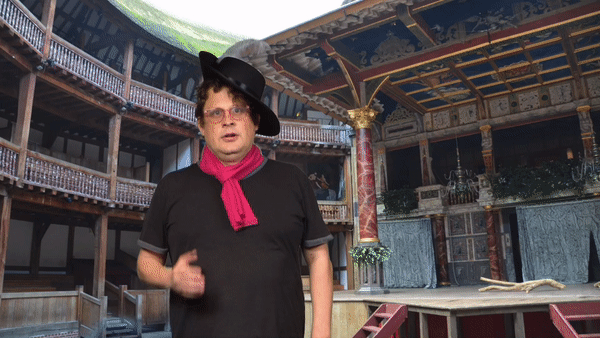
Frequently Asked Questions
- Is email still cool now that we have the web?
Well, duh! You didn’t think teachers would just give up on one of the most popular computer applications simply because of the web, did you (especially with web-based email services like Hotmail just around the corner)? Teachers were doing all sorts of cool things with email during this period, from using it to conduct interviews for research papers (Davis 1995), to supporting teachers’ professional development by subscribing to and participating on listservs (Smagorinsky 1997; Hogue 2003), to providing feedback to students (Monroe 2002). Since many students were already using email and related forms of computer-mediated communication (chat, IM, etc.), teachers like Dean Woodring Blase (2000) and Rebecca Bowers Sipe (2000) argued forcefully for using email as way to connect the entire class to foster more robust, interactive exchanges about all aspects of the writing process.
- What are some of the most charming ways EJ authors described the internet and computing in general?
Oh, there’s lots of great stuff here. Nilsen and
Nilsen (1995) wrote an article on this very topic called “Literary
Metaphors and Other Linguistic Innovations in Computer Language,”
where they unpack a lot of the contemporary jargon (much of it
inspired by sci-fi and fantasy literature) to describe the computing
world. Here is one choice gem: “Hackers call the most
computer-knowledgeable of these people techies, while they refer to
those who barely get by as lusers-a pun on user and loser” (65). You
can see the internet hype in full force here: get online or risk being
a LUSER!  And
then, there are some of the quaint ways EJ users described accessing
the early web. Here is one of our favorites: “Using a computer
connected to a phone line, the telecomputer (that’s you) dials a local
phone number that connects your computer to an online network” (Graves
1995, 41). For readers who don’t remember (or weren’t alive back
then!), you might not realize that people got online via their phone
landlines (and you couldn’t talk on the phone and be online at the
same time)!
And
then, there are some of the quaint ways EJ users described accessing
the early web. Here is one of our favorites: “Using a computer
connected to a phone line, the telecomputer (that’s you) dials a local
phone number that connects your computer to an online network” (Graves
1995, 41). For readers who don’t remember (or weren’t alive back
then!), you might not realize that people got online via their phone
landlines (and you couldn’t talk on the phone and be online at the
same time)!
While Graves evocation of telecomputing ultimately
was intended to make computers feel familiar and easy to use, some
teachers expressed more angst about the computer revolution: Diane
Morrison (1996) had what’s perhaps the most well-wrought depiction of
how frustrated we can get when working with computers:
“Almost a year ago, I was sitting alone in the teacher’s lounge, crying. Again, my progress reports, two days past due, were hidden in the unfathomable bowels of a cranky Macintosh. My attempts to print the reports were evidenced by a shredded tangle of paper on the floor. On the printer, red lights were flashing, angry beeps echoed from the Mac, and I, curling into a fetal position, gladly abandoned the Techno-revolution. Somehow, though, the revolution found me anyway, and I am here, like an old time revival witness, to share my revelations” (87).
Sure, this story of technological breakdown and redemption is a little hyperbolic, but we must admit that we’ve found ourselves wanting to curl into a fetal position more than a few times as we worked to debug the code for this project. There is crying in digital publishing!!!
- What is the most SHOCKING article you read?
Umm . . . well, there was an EJ article with an uncomfortably long and disconcerting digression about the perils of “dogsex” on the internet. We’ll just leave it here for you to peruse at your own risk.
- Is desktop publishing still popular after the web arrives?
Yep! At least in the first several years of this period, EJ still included accounts of teachers firing up their copies of Aldus Pagemaker and Aquilae Stilus for projects including school literary magazines (Dozier et al. 1995), the yearbook (Tarasovic 1995), and the class newspaper (Redmon 1997). But as we enter the 2000s, the emphasis moves away from print and more towards electronic publication on the web. One thing we noticed was that the mention of desktop publishing software in these articles about print publications was more in passing, not the central focus (suggesting perhaps that computers were beginning to be viewed as the unremarkable, default technology for print publishing in this period?).
- If you could go back in time and be a student in one of these teachers’ classes, whose would it be and why?
Hmmm . . . that’s a tough one, especially since so many teachers were doing such exciting and fun stuff. Jason was a wannabe poet in high school in the nineties so would have been all over the Romantic Circles web project! A younger and idealistic Ben would have been all about the projects happening in the classrooms of Dennis Lawrence and Honey Kern--contributing research on the history of racism in Kansas to an online research consortium or creating an online collection of resources on the Holocaust and other genocides, respectively. In the end, both of us would have most wanted to be in the classrooms where we saw ourselves writing for real audiences and making some kind of difference in the world. Of course, Cynthia Selfe is our favorite teacher in the corpus, but we’re biased since we both have had the chance to work with her on projects beyond the classroom at Ohio State. (Still, it would have been fun to have been Selfe’s student up at Michigan Tech in the Upper Peninsula in the nineties--though we southerners never would have survived the winters).
- What can literary digital humanities scholars learn from this era?
This period in the journal offers a real treasure trove of innovative approaches for teaching literature using web-based and CD-ROM media. While in some cases teachers were simply engaging students in analyzing digital (html or CD-ROM) versions of literary works with accompanying contextual materials, some teachers actually engaged students in digital humanities research (LoMonico 1995; Patterson 1999; Walton and Bork 2001). We loved an article by Michael LoMonico (1995) who engaged students in using a quantitative, digital text analysis program, Word Cruncher (1996 version), to analyze word frequencies in Shakespeare plays. One student did an exciting feminist analysis of A Midsummer Night’s Dream that considered the implications of the finding that “although the word ‘take ’ appears 24 times, the only woman who says the word is Hermia, and she says it only twice” (59). This is such a great model of how quantitative text analysis can be used to support critical feminist pedagogies of literature. Further demonstrating how digital tools can enable students to critically analyze the social and historical contexts of literary works, Nancy Patterson (1999) described a hypertext poetry assignment that used Storyspace as its authoring platform. Students created richly annotated and hyperlinked versions of selected Native American poems, drawing upon the broader historical and cultural contexts behind them: “The poem, then, became the opening of their hypertext web and served as the focusing agent for their research. Over the next few weeks, students pored over information, and they allowed themselves to be pulled in whatever direction their curiosity took them. For example, if the poem they were researching talked about ‘evil Spaniards’, then they first looked for information about the Spanish Conquest” (70). Instead of having students simply analyze digital editions produced by others, Patterson engaged students in the complex process of composing their own digital editions--a process that led them to a deeper understanding of the complex historical and ideological contexts in which the poems were situated.
- What are some of the more exciting software applications out there in this period?
Hands down, the thing we’d like to get our hands on is Voyager’s Macbeth Karaoke, “which allows you to choose a role and act scenes from the play against professional actors” (Holvig 1996, x). Wowzers!

At least one of us is up to the challenge!



